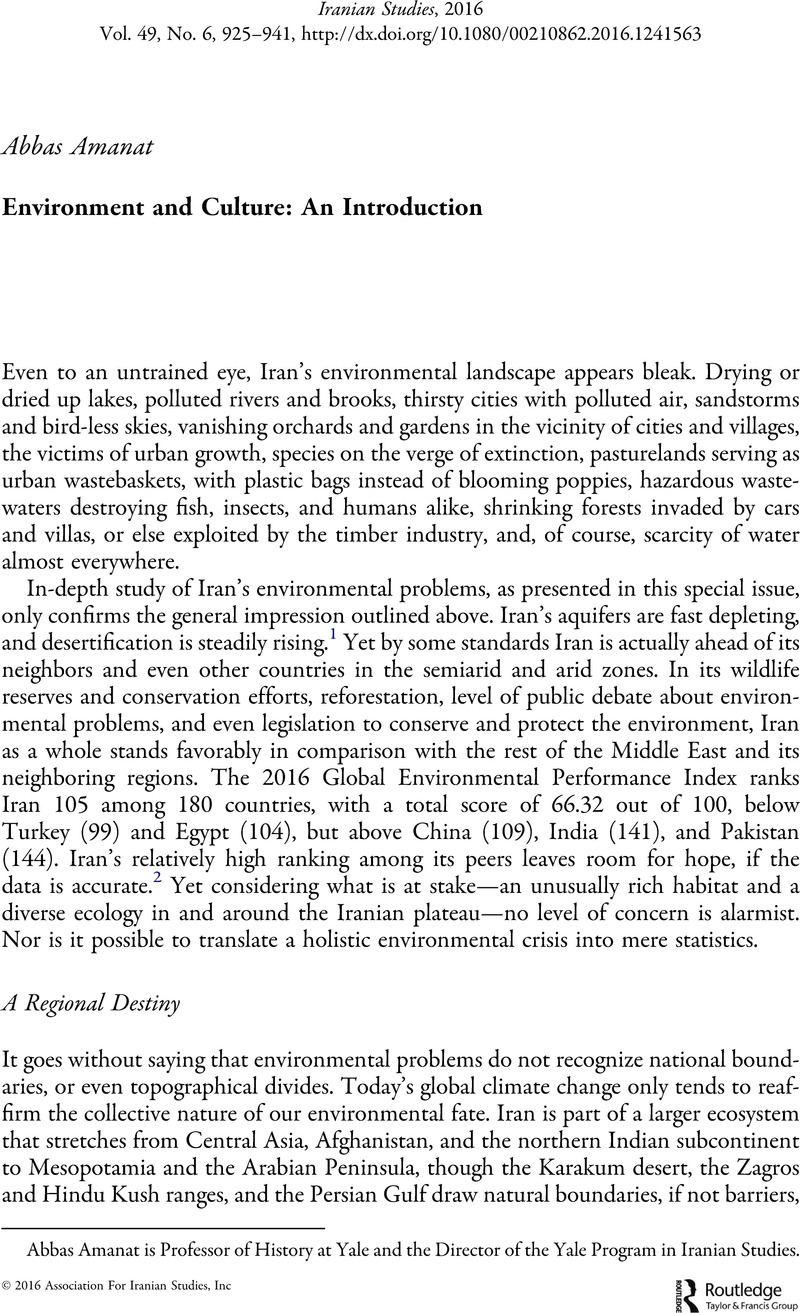Crossref Citations
This article has been cited by the following publications. This list is generated based on data provided by Crossref.
Tsesmelis, Demetrios E.
Karavitis, Christos A.
Oikonomou, Panagiotis D.
Alexandris, Stavros
and
Kosmas, Constantinos
2018.
Assessment of the Vulnerability to Drought and Desertification Characteristics Using the Standardized Drought Vulnerability Index (SDVI) and the Environmentally Sensitive Areas Index (ESAI).
Resources,
Vol. 8,
Issue. 1,
p.
6.
Karimi, Azadeh
and
Jones, Kendall
2020.
Assessing national human footprint and implications for biodiversity conservation in Iran.
Ambio,
Vol. 49,
Issue. 9,
p.
1506.
Saatsaz, Masoud
2020.
A historical investigation on water resources management in Iran.
Environment, Development and Sustainability,
Vol. 22,
Issue. 3,
p.
1749.
Madani, Kaveh
2021.
Have International Sanctions Impacted Iran’s Environment?.
World,
Vol. 2,
Issue. 2,
p.
231.
Tsesmelis, Demetrios E.
Vasilakou, Constantina G.
Kalogeropoulos, Kleomenis
Stathopoulos, Nikolaos
Alexandris, Stavros G.
Zervas, Efthimios
Oikonomou, Panagiotis D.
and
Karavitis, Christos A.
2022.
Computers in Earth and Environmental Sciences.
p.
619.
Faazeli, Mohamad
Namdar, Razieh
and
Ali, Ghaffar
2023.
Nature relatedness scale: Validity and reliability in the Persian context, factors constructing and influencing it.
PLOS ONE,
Vol. 18,
Issue. 4,
p.
e0274885.
Hassaniyan, Allan
2024.
Iran’s water policy: Environmental injustice and peripheral marginalisation.
Progress in Physical Geography: Earth and Environment,
Vol. 48,
Issue. 3,
p.
420.
Abe, Satoshi
2025.
Re-considering Environmental Activism in Iran: Materiality and Social Histories of Nature.
Iranian Studies,
p.
1.


